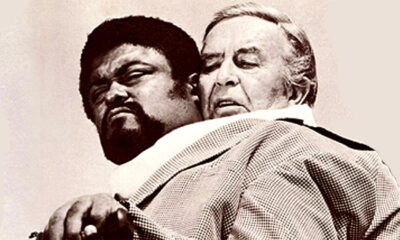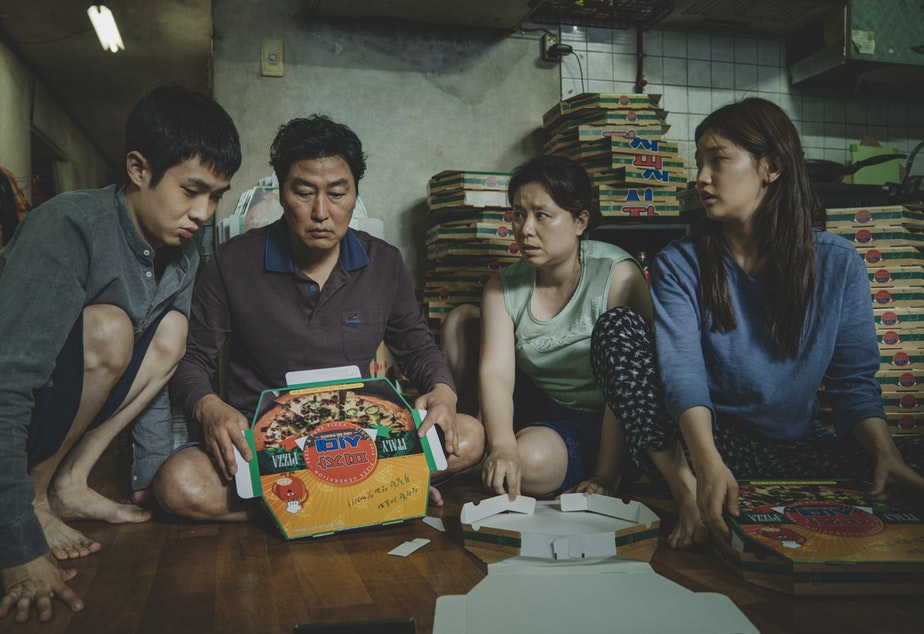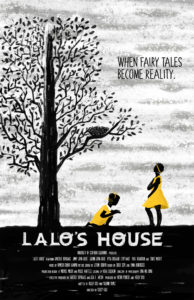Filmmakers
Mumblecore: The Last Ten Years

In 2005 Andrew Bujalski’s “Mutual Appreciation,” and Jay and Mark Duplass’ “Puffy Chair” initiated a string of movies that embodied elements which would later become the mumblecore genre. Aaron Katz’s 2006 film “Dance Party USA,” and Joe Swanberg’s “Hannah Takes the Stairs” would also become mumblecore staples, the latter perhaps the most popular, but both certifying the existence of a new, however subtle, movement in independent cinema. Characterized by improvised dialogue, handheld cinematography, and unemphasized plot points, the mumblecore approach was a direct retaliation to social, professional, and hollywood frustrations spearheaded primarily by artistically inclined Generation X-ers. Natural free-flowing dialogue and very low beget production makes up the core values of the independent film subgenre. Amateur actors are often preferred over traditional actors, as they bring certain elements that traditionally trained actors might not be accustomed to exhibiting on camera, for example, mumbling and other overtly realistic traits of natural speech. In my opinion the last ten years of mumblecore have been underemphasized and under-evaluated. Some critics have gone as far as to say that the genre’s label is nothing more than a classification of average, over simplified films. Today’s independent cinema has clearly been influenced by the last ten years of mumblecore. As new young filmmakers take up the camera a new wave of film is taking place. The mumblecore aesthetic is spearheading a new act in indie cinema full of diversity, honesty, and personality.
Independent film in the 1990’s seemed to be preoccupied with the Tarantino effect after “Reservoir Dogs” (1991), and “Pulp Fiction” (1994). Disillusioned filmmakers invested time and money to create the next great American film and “make it” in the industry by somehow slithering through the rusted gears of the Hollywood system. Eventually it was a new decade, Y2K was a thing of the past, and DV tapes were cheaper than ever. A new form of filmmaking took shape, one that essentially took the verite qualities of past films like Slacker (1991) and the personal anxieties of Woody Allen and heightened these documentary-like qualities to produce hyper-realistic cinema, that if nothing else, was interesting for the simple fact that it was all unapologetically relatable.
Fast forward five years to 2010. The Duplass brothers took the genre to new shiny heights with their film “Cyrus,” which was backed by Fox Searchlights Productions – the first time that so-called mumblecore directors and a major studio had partnered. In an effort to preserve their creative approach amidst studio pressures, Mark Duplass explained how he and co-director Jay Duplass treated each scene as “a nude scene,” that is to say, intimate and with as little crewmembers around as possible in an effort to infuse each scene with an improvisational “anything can happen” feel.
With many of the “mumblecore directors” well into their 30’s and some already in their 40’s, a new generation of millennial filmmakers are embracing the genre. Lena Dunham is perhaps one of the more famous “neo” mumblecore directors. Her 2010 film “Tiny Furniture” premiered at the South By Southwest Film Festival to rave reviews and eventually went on to win an Independent Spirit Award for best screenplay. The success of “Tiny Furniture” lead to the highly successful HBO show “Girls,” which follows a group of young women in New York City in their mid-twenties.
What makes this a particularly interesting time is that two worlds within the mumblecore genre are coexisting. The Duplass brothers have their new HBO show “Togetherness,” where they explore family life, careers, and marital issues – a bit of far cry from there earlier films that dealt with more coming-of-age issues. The slack has been picked up by new filmmakers and shows like “Girls.” The mumblecore aesthetic seems especially fitting for the millennial generation. When technology becomes more affordable, filmmakers have generally benefited proportionately. The tools to make films have never been more accessible. Not only is art easier to make, it’s easier to distribute as well. Think of the wealth of self distribution platforms like Amazon Kindle Direct Publishing, Etsy, VOD etc. Mix easy access to tools, a highly knowledgeable and creative millennial generation, and the insecurities of a dwindling job market with the inevitable insecurities of most young people -and you get interesting films ready to happen.
A major critique of the mumblecore genre is that it lacks diversity and tends to hover around middle class, white, artsy individuals. A recent exception to this is Desiree Akhavan. Her debut feature film “Appropriate Behavior” chronicles a young queer Iranian American in New York City. The appeal of the mumblecore aesthetic to young filmmakers is its success in portraying honesty and genuine cinema without an emphasis on superficial elements. I feel that this genre embodies the independent film spirit in a way that will eventually lead it to transcend racial borders and reach a segment of society and facilitate the creation of a new, more diverse, film language. The current generation’s creativity, along with the ease in technical production, and recent revival of race dialogue in the United States will give rise to a new wave of filmmakers, I hope. The genre’s originality lies in it’s intricacies, in everyday personal interactions among everyday people. A little honesty goes a long way. You don’t need catchy lines and over the top plot points – just honest dialogue.
This year marks ten years since Bujalski and the Duplass brothers premiered their films. Appropriately enough, Mark Duplass presented a keynote address at this year’s South By Southwest Film Festival, where the “Puffy Chair” premiered in 2005. His address was centered around practical advice for the new generation of filmmakers, explaining how he traversed (but essentially bypassed) the Hollywood studio system. An exciting new chapter is taking shape – here’s to another ten years of creative and honest cinema.
Filmmakers
Out of the Basement: The Social Impact of ‘Parasite’

When Bong Joon-ho’s Parasite won multiple Oscars at this past weekend’s 92nd Academy Awards, the reaction was one of almost unanimous joy from the attendees and much of the American audience. Setting aside the remarkable achievement of a South Korean movie being the first to win Best Picture, this was due to the fact that so many people have been able to identify with Bong’s film, engaging in its central metaphor(s) in their own individual ways. Everyone from public school students to Chrissy Teigen have expressed their affection for the film on social media, proving that the movie has reached an impressively broad audience. The irony of these reactions is noting how each viewer sees themselves in the film without critique—those public school students find nothing wrong with the extreme lengths the movie’s poor family goes to, and wealthy celebrities praise the movie one minute while blithely discussing their personal excesses the next. Parasite is a film about class with a capital “C,” not a polemic but an honest and unflinching satire that targets everyone trapped within the bonds of capitalism.
Part of Parasite’s cleverness in its social commentary is how it depicts each class in such a way as to support the viewer’s inherent biases. If you’re in the middle-to-lower classes, you find the Kim’s crafty and charming, and echo their critiques of the Park’s obscene wealth and ignorance. If you’re a part of the upper class, you empathize with the Park’s juggling of responsibilities while indulging in their wealth, and have a natural suspicion toward (if not revulsion of) the poor. If you have a foot in both worlds, like housekeeper Moon-gwang and her husband Geun-sae, you can understand how the two of them wish to not upset the balance, so that they can secretly and quietly profit. All throughout Parasite, there’s a point of view to lock onto.
The point of the film is not to single out one of these groups as villainous, but to show how they’re part of a system that is the true source of evil. The movie has been criticized for lacking a person (or persons) to easily blame, which would of course be more comforting dramatically. Bong (along with co-writer Han Jin-won) instead makes the invisible systems of class and capitalism the true culprit, which is seen most prominently at the end of the film. All the characters are present at the same party, whether as hosts, guests, help, or uninvited crashers, and each class group suffers a mortal loss. It’s all part of the tension built throughout the movie coming to a head, yet there’s an inevitability to these deaths as well, a price each group inadvertently pays to keep the corrupt system they’re all a part of running. In this fashion, the movie is reminiscent of several works of dystopian fiction, such as Shirley Jackson’s “The Lottery,” and Aldous Huxley’s “Brave New World.” The film particularly recalls Ursula K. Le Guin’s short story “The Ones Who Walk Away from Omelas,” in which a utopian society is dependent on the continual torture and misery of a single child. Every system demands sacrifice, and Bong and Han make clear that that sacrifice is paid many times over.
The real twist of the knife in Parasite is the epilogue, which reveals that the real point of the class and capitalist systems is to keep as many people in their place as possible. The Park’s remain wealthy, and easily move away from their old house. The Kim’s remain in their same squalid hovel, with their patriarch now stuck in the basement hideaway of the Park’s old home. In “Omelas,” the tortured child is kept in a basement, as well, and where that story tells of individuals who reject that system and choose to leave it, Parasite shows that everyone has chosen to stay, with the erroneous belief that they can eventually change their place. The film’s intense relatability is likely the main reason for it being so beloved, yet it’s the messages it sneaks in that will hopefully be its most lasting social impact. All of us are still trapped within the system, but at least the secret of how it fails us and how it lies has managed to escape the basement. Let’s hope we can eventually escape, too.
Filmmakers
What are the challenges of filming a foreign culture?

Filming a foreign culture is not like filming your own. There are a lot of challenges that are faced by people to film a foreign culture. One of the basic reasons is that you may not know much about that culture, which will act as a drawback when trying to accurately record it. It is not about the niche of the location, but the reality of it and where that takes us. When you film culture, you must have a great understanding of it. Therefore, you should study it to get a good understanding of the nuances of the culture.
Films have a huge impact on other societies, and if your film lacks the essence of the culture, it won’t be able to give a good impression to your viewers. A lot of people get overwhelmed by other cultures and their uniqueness, most of the times getting an idea about other cultures through film, television, and the internet. Be it culture or any other information, filming has played a huge role in cultivating an impression on the minds and hearts of the people.
Filming Foreign Cultures – A Challenge
Filming in foreign countries is difficult because penetrating deep into the society of any country and culture requires a good understanding of the subject. Having that understanding can alleviate these hurdles.
Seeing the Foreign Culture Through the Eyes of the Camera
Most of us get the an idea of foreign cultures from media representations, this is because we cannot experiences all the worlds cultures for ourselves. That’s why people use social media and other internet platforms to learn about different cultures around the world. That is why whatever you make, people will see, and start believing. Which is why there is a huge responsibility to show different cultures accurately.
Challenges Faced During Filming
When you take ownership of showing the world different foreign cultures, you must make sure that everything is authentic. Made up stories won’t do because they will have a bad impact on the culture but also your credibility. That is why you should try to keep things real and accurate.
Originality
Keeping everything in its original state is the best thing video maker can do. Uniqueness and creativity are acceptable, but when the things start getting faux, the real essence gets lost, which is why it’s important preserve things in their original form.
Money and Finances
For film shooting in foreign countries, a lot of money and financial aids are required. Very good artists don’t get the opportunity to use their abilities because they don’t have enough money to film. For productive and creative filmmaking you need money, if that’s not there the problems are obvious.
Video Making on Demand
If there is a demand for a particular story, everyone will try to make videos on that subject. Sometimes, in these cases, the real story gets hidden. Many times, people do not film what is needed because they re too busy filming what is trending. This affects the film industry and the filmmakers as well.
Lack of Creativity
Lack of creativity is no doubt a huge challenge for the film making industry. Sequels and remakes of the videos are not something in demand and that demeans the meaning of creativity. If you want to make a statement, you must show how creative you are. This will help you get to the limelight in no time.
The film industry is progressing at a very fast pace and with great power comes huge responsibility, that’s what we all need to understand. Admit the fact that what you portray will be saved forever, and that slight irresponsibility can ruin another culture, which should not be the intention of anyone.
This article was written by William Roy, check out his website Movie Trivia
Academia
What is USC’ Media Institute for Social Change?
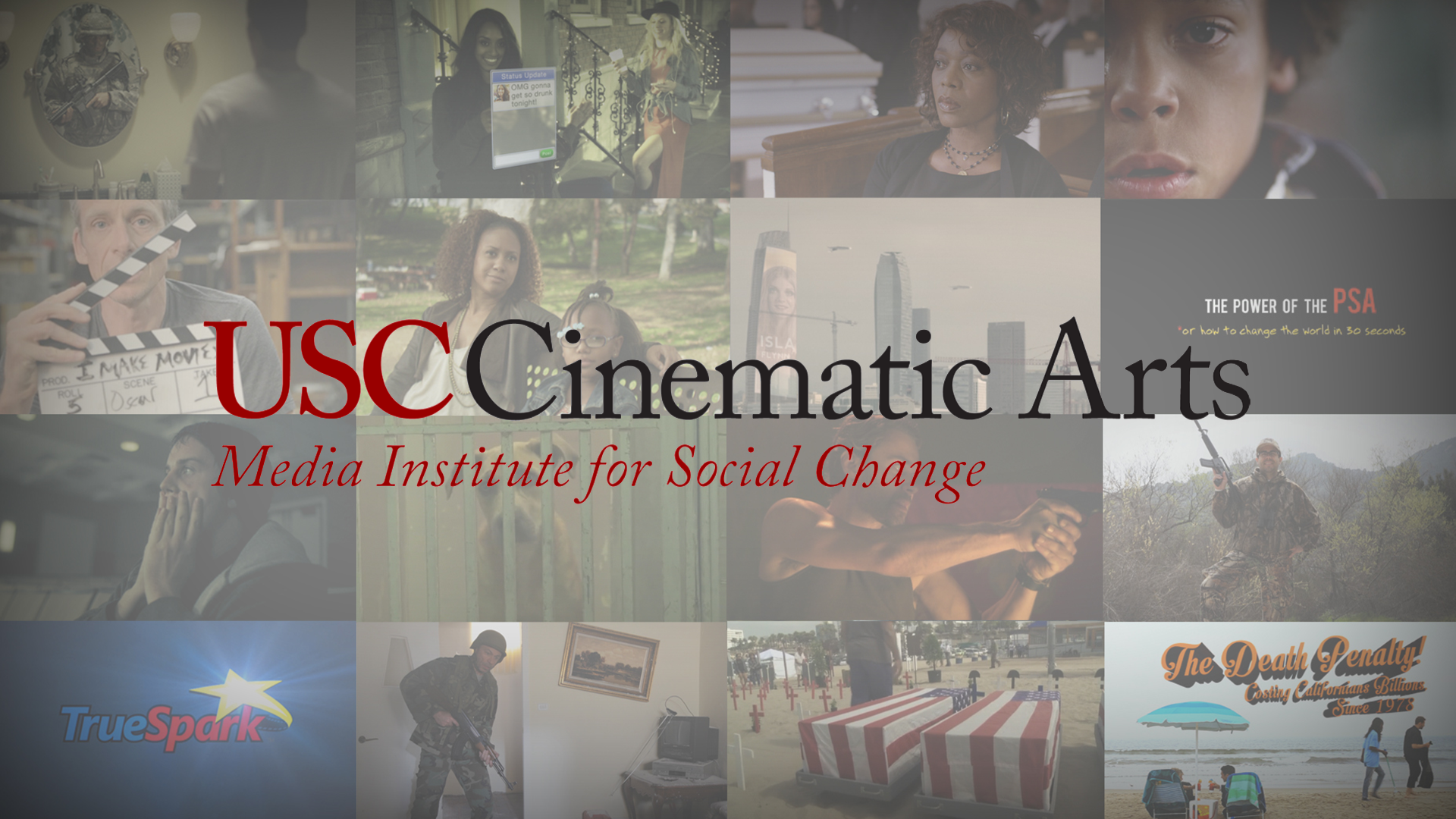
The Media Institute for Social Change, known as MISC, is a production and research institute at the USC School of Cinematic Arts focused on using media as a tool for effecting social change. Founded in 2013 by Michael Taylor, a producer and Professor in the School’s famed Film & Television Production Division, the MISC maxim is that “entertainment can change the world.” It spreads this message by producing illustrative content, and by mentoring student projects, awarding scholarships and leading research. “We are training the next generation of filmmakers to weave social issues into their films, television shows and video games,” says Taylor. “As creators the work we do has a huge impact on our culture and that gives us an opportunity to influence good outcomes.”
In recent years MISC has partnered with organizations including Save the Children, National Institutes of Health and Operation Gratitude, and creative companies like Giorgio Armani, the Motion Picture Association of America and FilmAid, to create groundbreaking work that have important social issues woven into the narrative. MISC also worked with USC’s Keck School of Medicine to create Big Data: Biomedicine a film that shows how crucial big data has become to creating breakthroughs in the medical world. Other MISC films include the upcoming The Interpreter, a short film centered on an Afghan interpreter who is hunted by the Taliban, and The Pamoja Project, the story of 3 Tanzanian women who determined to help their communities by immersing themselves in the worlds of microfinance, health and education. MISC has also partnered with the app KWIPPIT to create emojis that spread social messages. Together they co-hosted the Project Hope L.A. Benefit Concert to spread awareness about the massive uptick of homelessness in Los Angeles.
The Power of the PSA or How to Change the World in 30 Seconds, which documented the institute’s collaboration with the Los Angeles CBS affiliate KCAL9 to make PSAs on gun violence, internet safety, and PTSD among veterans. Another MISC-sponsored film, Lalo’s House, was shot in Haiti with the intention of exposing the child trafficking that is rampant there and in other countries, including the United States. The short film (which is being made into a feature) was used by UNICEF to encourage stricter legislation prohibiting the exploitation of minors, and has won several awards, including a Student Academy Award.
“Our goal,” says Taylor, “is to send our students into the industry with the skills and desire to make entertainment that has positive impact on our culture.” The dream is a variety of mass-media entertainment where social messages aren’t an afterthought but are central to the storytelling.
For more about MISC and its projects, go to uscmisc.org.
-

 SIE Magazine9 years ago
SIE Magazine9 years agoWhat Makes A Masterpiece and Blockbuster Work?
-

 Filmmakers9 years ago
Filmmakers9 years agoFilms That Changed The World: Philadelphia (1993)
-

 Companies6 years ago
Companies6 years agoSocial Impact Filmmaking: The How-To
-
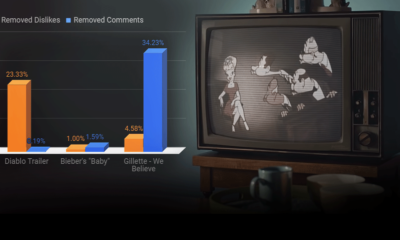
 Media Impact5 years ago
Media Impact5 years agoCan We Believe The Gillette Ad?
-

 SIE Magazine9 years ago
SIE Magazine9 years agoDie Welle and Lesson Plan: A Story Told Two Ways
-

 Academia8 years ago
Academia8 years agoFilmmaking Pitfalls in Deal-Making and Distribution
-

 Academia8 years ago
Academia8 years agoJoshua Oppenheimer: Why Filmmakers Shouldn’t Chase Impact
-

 Filmmakers9 years ago
Filmmakers9 years agoStephen Hawking vs The Elephant Man











